I have to generate 250 plots with the same view.
My example data set:
df <- data.frame(name = c("john","alex","mike","dennis","alex"),
expenses = c("10","12","15","8","2"),
type = c("food","rent","rent","food","food"))
I would like bar plots with the expenses for every name in a single plot. The plot for "alex" will look like:
selected.name <- "alex"
df1 <- subset(df, name == selected.name)
ggplot(data = df1, aes(type, expenses)) + geom_bar()
Now I want to use a loop that plots the same plot for every name in the df. I have tried to use a for loop that runs the plot code above as a source file. But I can't pass the name variable to the source file so that it plots the graph for every name. Now I only get one graph out of the for loop.
